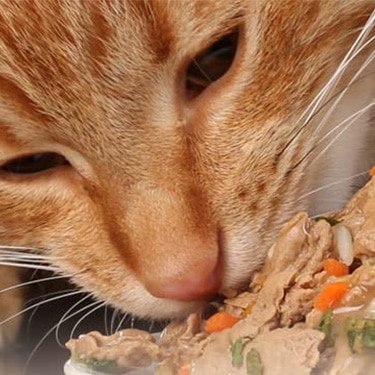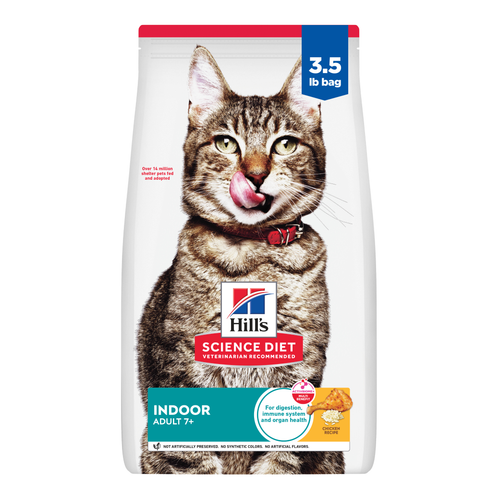
-
Find the right food for your petTake this quiz to see which food may be the best for your furry friend.Find the right food for your petTake this quiz to see which food may be the best for your furry friend.Featured products
 Puppy Chicken & Rice Stew
Puppy Chicken & Rice StewChicken & Rice Stew with great taste and precisely balanced nutrition to support 5 essential building blocks for lifelong health
Shop Now Adult No Corn, Wheat, Soy Savory Stew with Chicken & Zucchini Dog FoodShop Now
Adult No Corn, Wheat, Soy Savory Stew with Chicken & Zucchini Dog FoodShop Now Adult Perfect Weight & Joint Support Hearty Vegetables and Tuna Stew Dog FoodShop NowFeatured products
Adult Perfect Weight & Joint Support Hearty Vegetables and Tuna Stew Dog FoodShop NowFeatured products Adult Urinary Hairball Control
Adult Urinary Hairball ControlSupports the health of the whole urinary system with optimal levels of magnesium
Shop Now Adult Chicken Recipe Cat Food
Adult Chicken Recipe Cat FoodSupports lean muscle and beautiful fur for adult cats
Shop Now Sensitive Stomach & Skin Chicken & Vegetable Entrée Cat Food
Sensitive Stomach & Skin Chicken & Vegetable Entrée Cat FoodHill's Science Diet Adult Sensitive Stomach & Skin Chicken & Vegetable Entrée canned cat food provides nutrition for optimal digestive & skin health.
Shop Now -
Dog
- Dog Tips & Articles
-
Health Category
- Weight
- Food & Environmental Sensitivities
- Urinary
- Digestive
- Joint
- Kidney
-
Life Stage
- Puppy Nutrition
- Adult Nutrition
- Senior Nutrition
Cat- Cat Tips & Articles
-
Health Category
- Weight
- Skin & Food Sensitivities
- Urinary
- Digestive
- Kidney
-
Life Stage
- Kitten Nutrition
- Adult Nutrition
Featured articles The Science Behind Our Love for Pets
The Science Behind Our Love for PetsLearn the scientific reasons why we have such strong connections with our pets, and what science says about the love between humans and our furry friends.
Read More What Is Littermate Syndrome? Pet Adoption Guide
What Is Littermate Syndrome? Pet Adoption GuideLearn more about littermate syndrome in dogs and cats and how to successfully navigate adoption and early socialization processes.
Read More How to Properly Mix Wet & Dry Pet Foods
How to Properly Mix Wet & Dry Pet FoodsAn Orange cat eating from a bowl filled with mixed food
Read More -


In a cat's world, nothing is off limits: the inside of boxes, underneath a bed, on top of your keyboard. It's all fair game to a cat that wants to play, rest, hide, or is just plain curious.
That cat privilege extends—in their mind—to perches on the top of your counters, the upper reaches of a bookshelf, and even the top of the refrigerator. After all, cat jumping skills are top-notch. Cats can easily exceed altitudes six times their height. A study in the Journal of Experimental Biology reports that cats are superior jumpers because of the limb length and muscle mass of their back legs. Cats start a jump in a very deep crouch, then lift their front legs before "an explosive extension" of their back legs.
While there is no argument that a cat's jumping ability is impressive, it can also be annoying (and dangerous, as Vetstreet notes cats don't always land on their feet) to have cats regularly leaping to spots in your home that are high above their heads.
How can pet parents keep cats off furniture, shelves, counters, and anywhere else in the home where they don't belong?
Clean off Shelves
Cats are naturally curious. A pen, a set of keys, or a fragile knick-knack can catch their attention and tempt them to jump up to explore this "toy" that has been left for them to find. By keeping shelves clear of clutter, you can also lessen your cat's interest in exploring places you don't want them to go. This can also be beneficial to you as cats are known for knocking things off shelves, and unfortunately they aren't good at handling a broom and dustpan to clean up the mess after themselves.

Keep Food off Kitchen Counters
A cat's sense of smell is much better than yours, so if they smell something tasty, they are likely to jump up to try to sneak a nibble. That can be dangerous for them, depending on what the food is. By keeping counters clear of food and crumbs, you'll discourage your kitty from leaping onto your kitchen counters. If you find that your cat is intensely curious about what you're making for dinner—and won't stay off the counters while you're preparing it—simply shut your cat in another room until the kitchen is clean.
Shut the Blinds
Cats like to jump to window sills to take in the outdoor view. If there's a windowsill that you don't want your cat to use, simply shut the blinds to take away the kitty TV. But make sure you give your cat at least one spot to look outside, as cats enjoy watching the world go by.


Tasty Tips
Give Them an Alternative
A cat jumping condo gives your furry friend a place to jump, exercise, and explore. Keep it interesting for them by rotating the toys, boxes to hide in and even crumpled pieces of paper to bat around. Be imaginative! Cat trees are also an excellent way to let your cats jump and climb to their hearts desire. It's important to note that you shouldn't completely eliminate your cat's ability to jump. It's part of their innate behavior built into their DNA from their ancestors, where they would climb trees to escape predators as well as stalk their prey from high above before pouncing. Providing an approved place for exercise and jumping will also help keep your cat off of other high areas where they might not be welcomed.
Use Double-Sided Tape
Cats hate the feel of double-sided tape on their paws, so it can be a good deterrent for a cat who continues to jump to a place you don't want them to go. If it's a spot you use frequently, attach the double-sided tape to a place mat so it's easily movable.
Understand Their Jumping Behavior
It's true that jumping is coded in your cat's DNA. They are hardwired to enjoy being up high where they are safe, but it is also good as the parent to understand the need to be hidden away from everyone. If you notice your cat jumping up high more frequently or shying back in hard to reach areas like cabinets or the top of a closet it might be because they are stressed or not feeling their best. Because of their ancestral lineage, cats that are sick or injured will hide themselves away to keep out of reach of predators. They might also be trying to get away from some other sort of danger if they feel afraid. It's helpful to understand what they might be fearful of to help remove it from the environment. Slowly, as your cat starts to feel safer, they will come back down to your level and interact more.
Cats are natural jumpers so you shouldn't discourage the behavior altogether. But with a little training, you can teach your cat where not to leap.


Kara Murphy is a freelance writer and pet parent who lives in Erie, Pa. She has a goldendoodle named Maddie.
Related products

Improves Everyday Ability to Get Up & Go

Delectable chunks with tender chicken smothered in a rich gravy

Precisely balanced nutrition with the delicious taste of minced turkey & liver to help fuel the energy needs of cats during the prime of their life

Supports energy level and beautiful fur in mature indoor cats
Related articles

Learn how to litter train a kitten with this guide to potty training, including when to start litter training kittens and troubleshooting tips.

Discover which cat toys games your feline friend might like, and how they are great sources of exercise. Explore our library of articles to learn more.

When you adopt a cat, you don't just gain a best friend; you also save her life. Here's why getting a cat from a local animal shelter makes so much sense.

Discover how to train your cat, starting with very basic first steps that both reward good behavior and discourage the bad.

Put your cat on a diet without them knowing
Our low calorie formula helps you control your cat's weight. It's packed with high-quality protein for building lean muscles, and made with purposeful ingredients for a flavorful, nutritious meal. Clinically proven antioxidants, Vitamin C+E, help promote a healthy immune system.
Put your cat on a diet without them knowing
Our low calorie formula helps you control your cat's weight. It's packed with high-quality protein for building lean muscles, and made with purposeful ingredients for a flavorful, nutritious meal. Clinically proven antioxidants, Vitamin C+E, help promote a healthy immune system.

